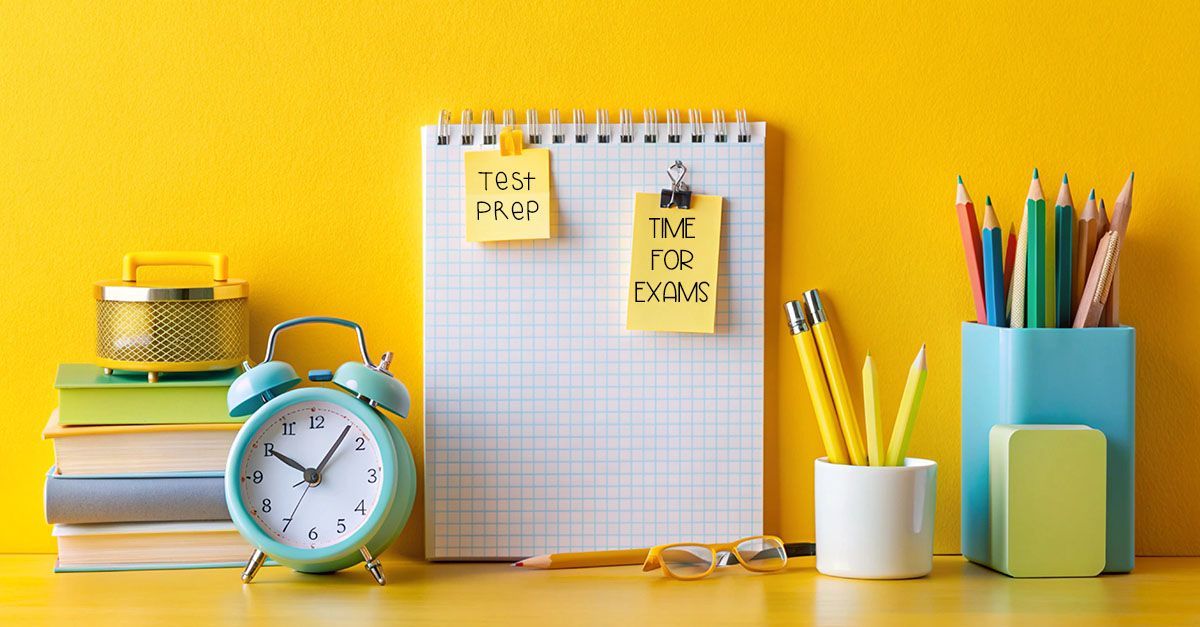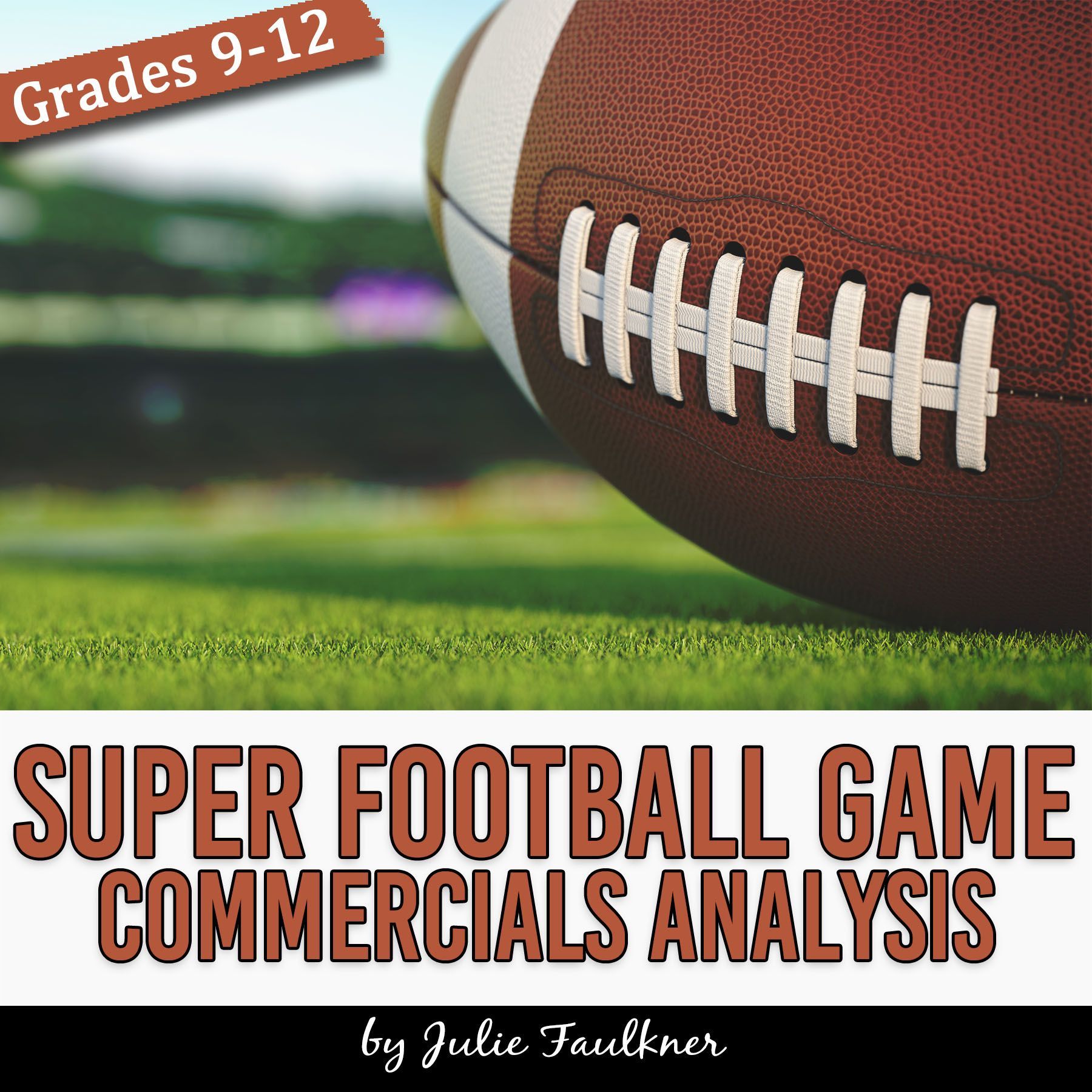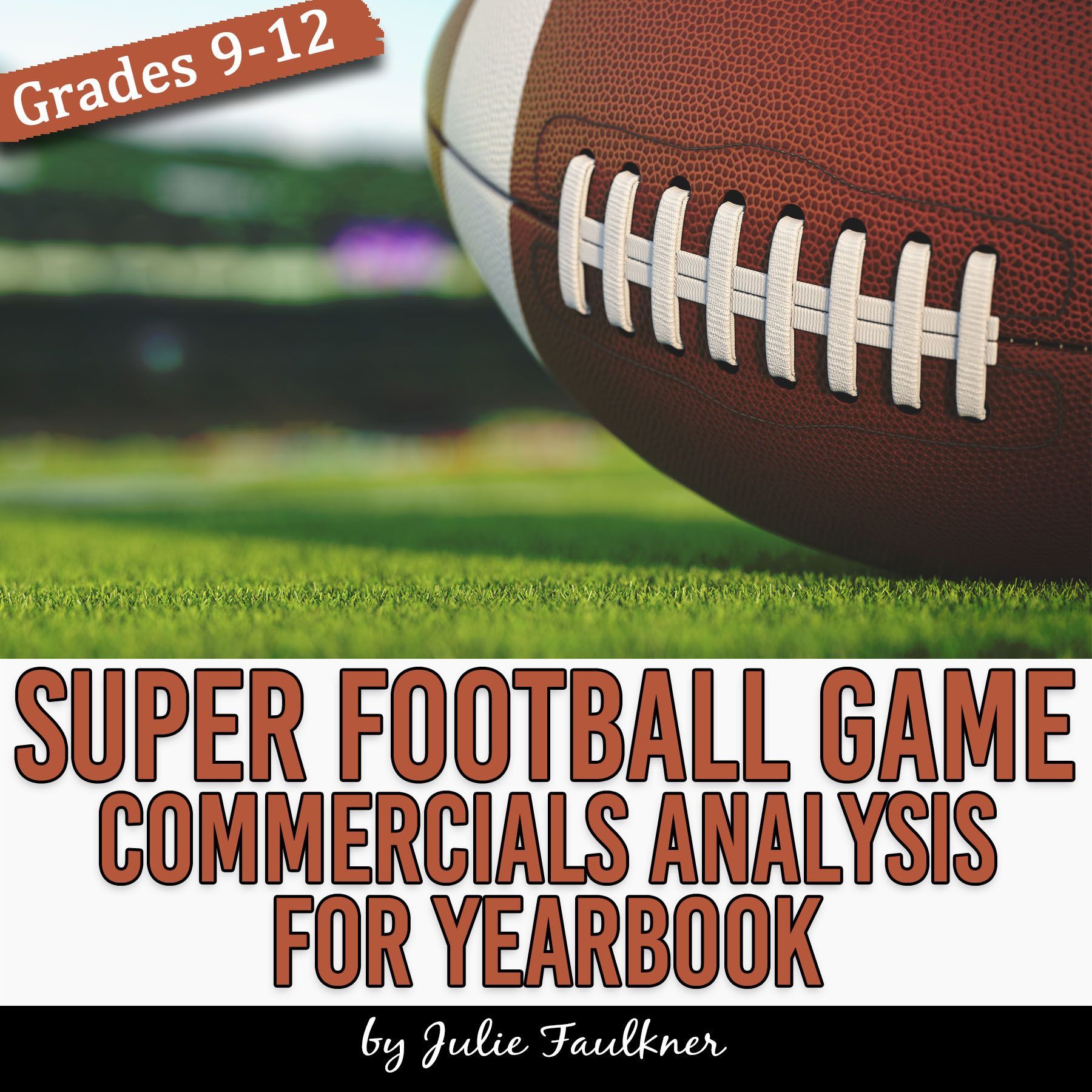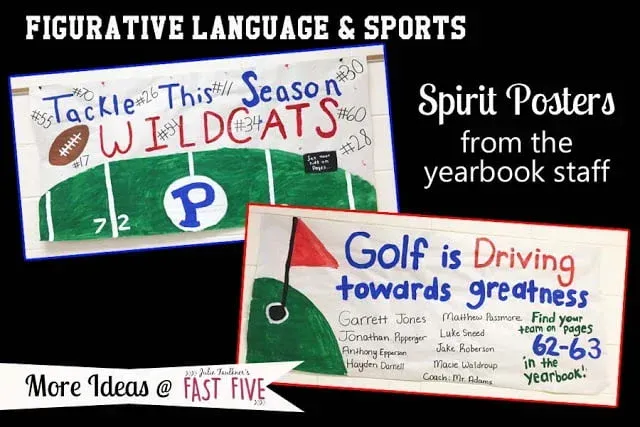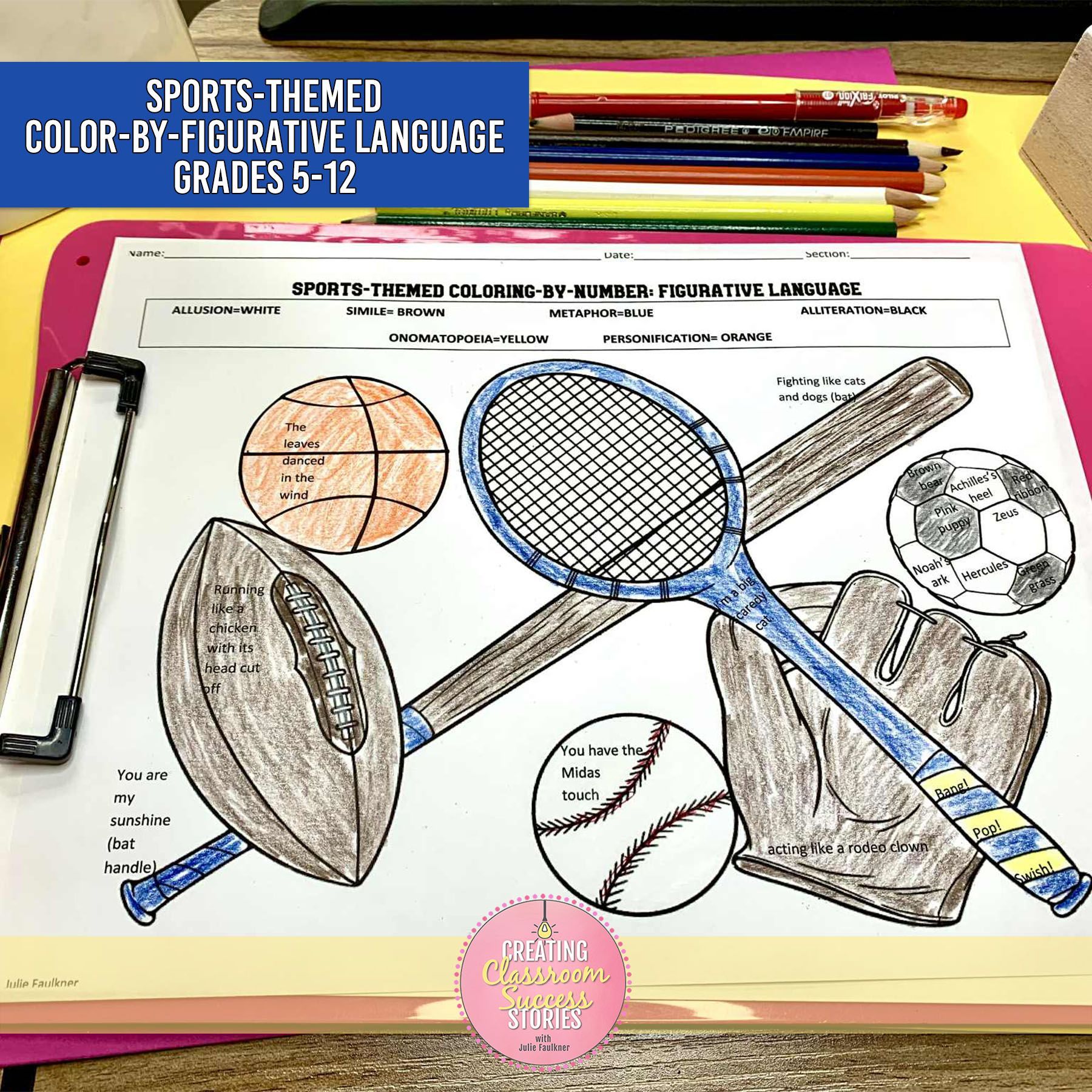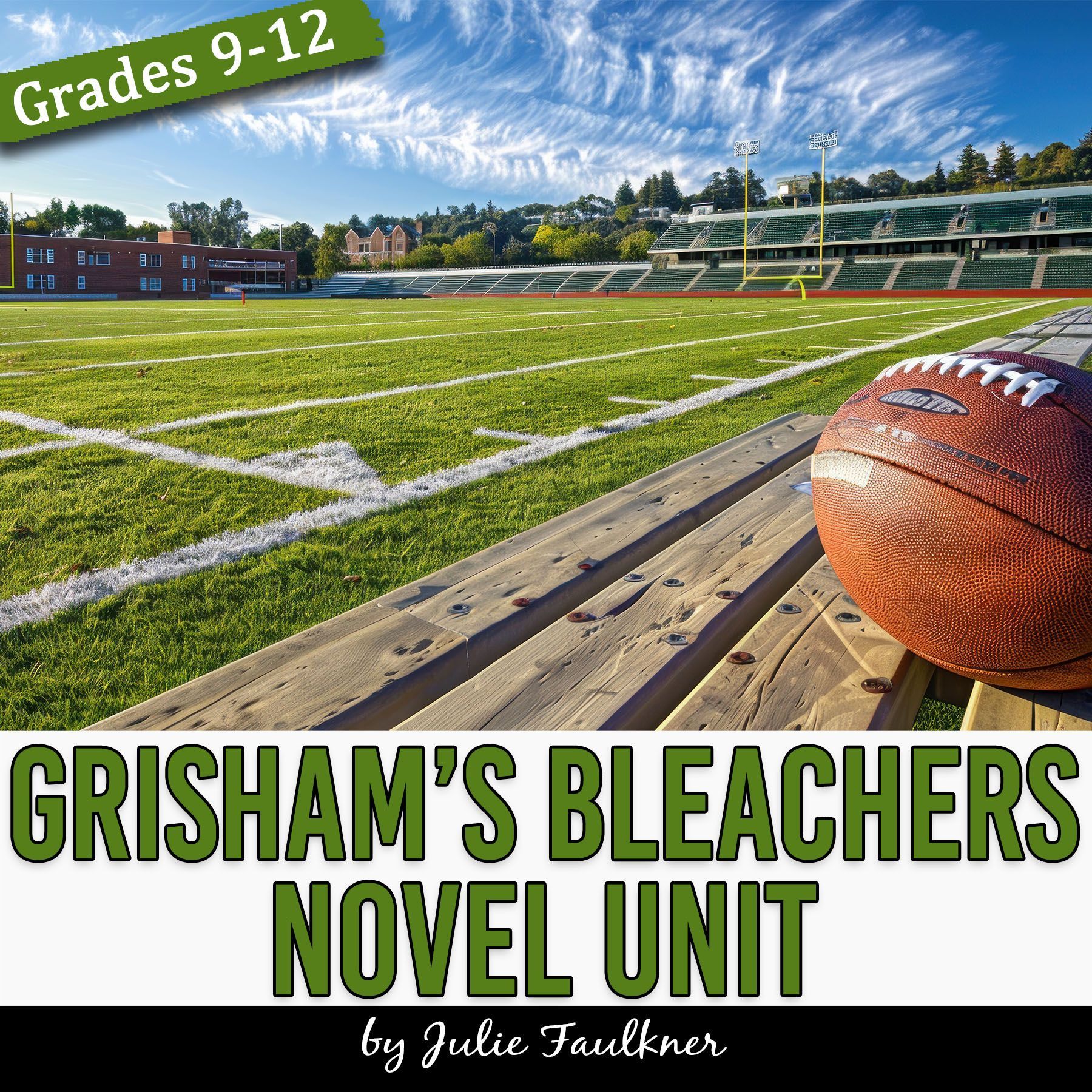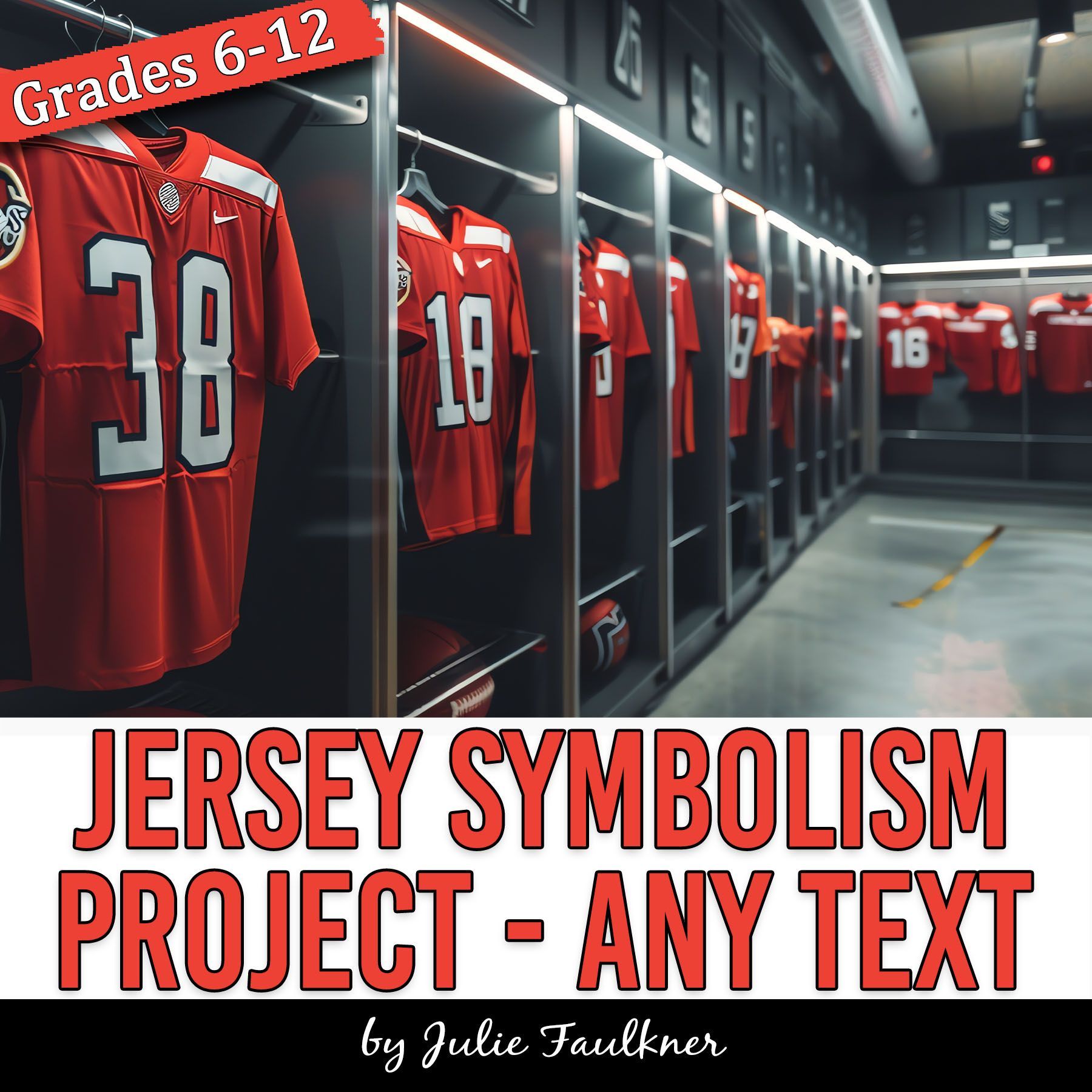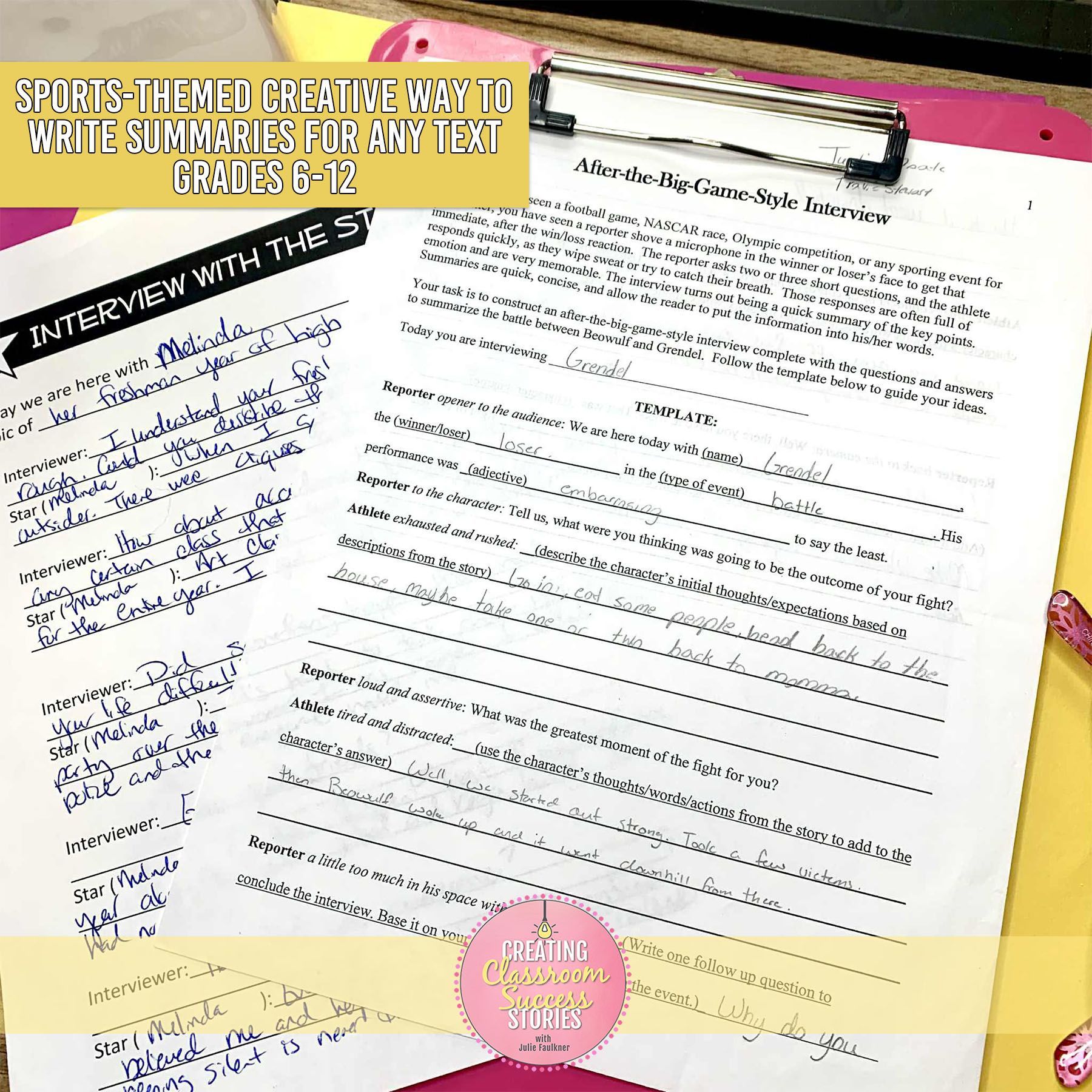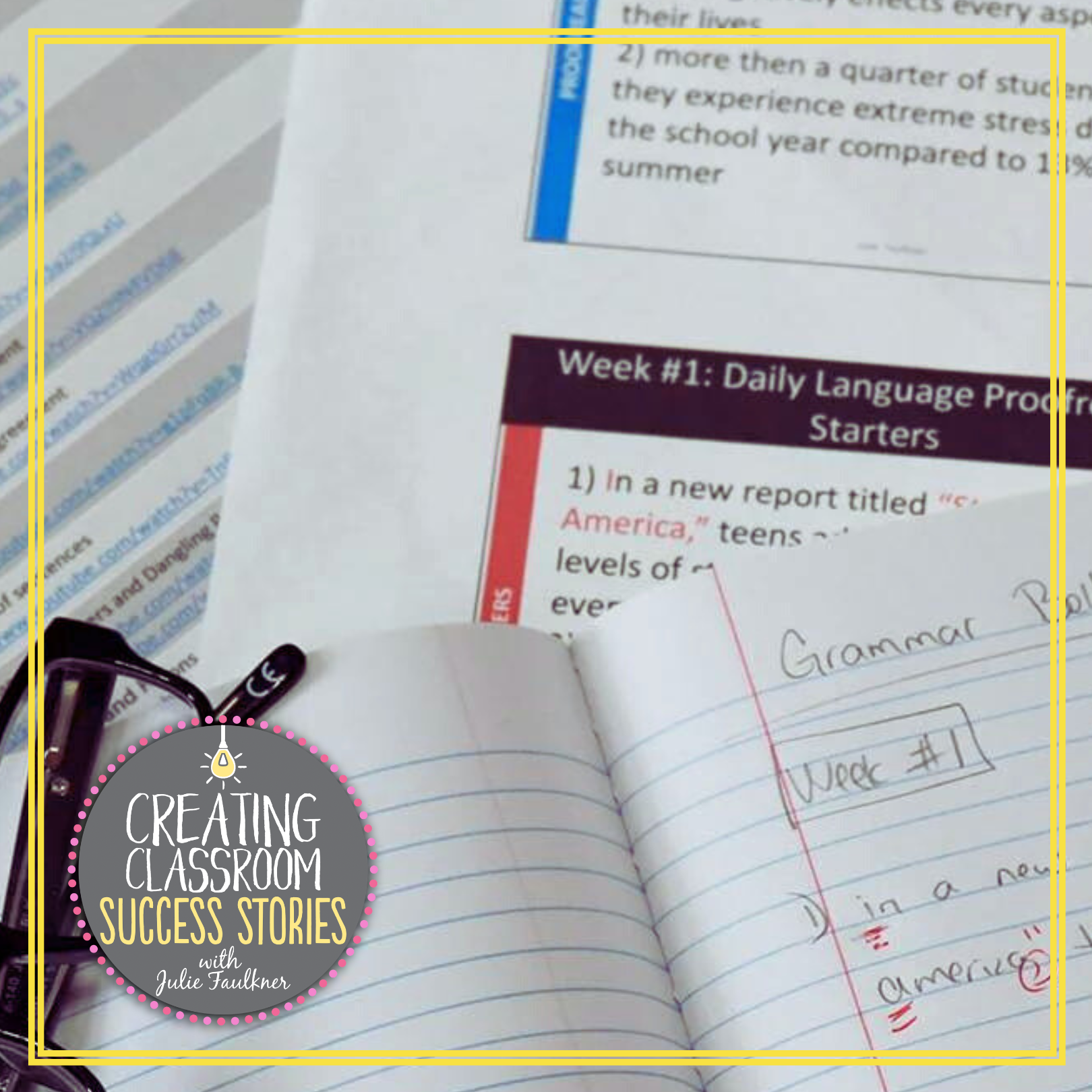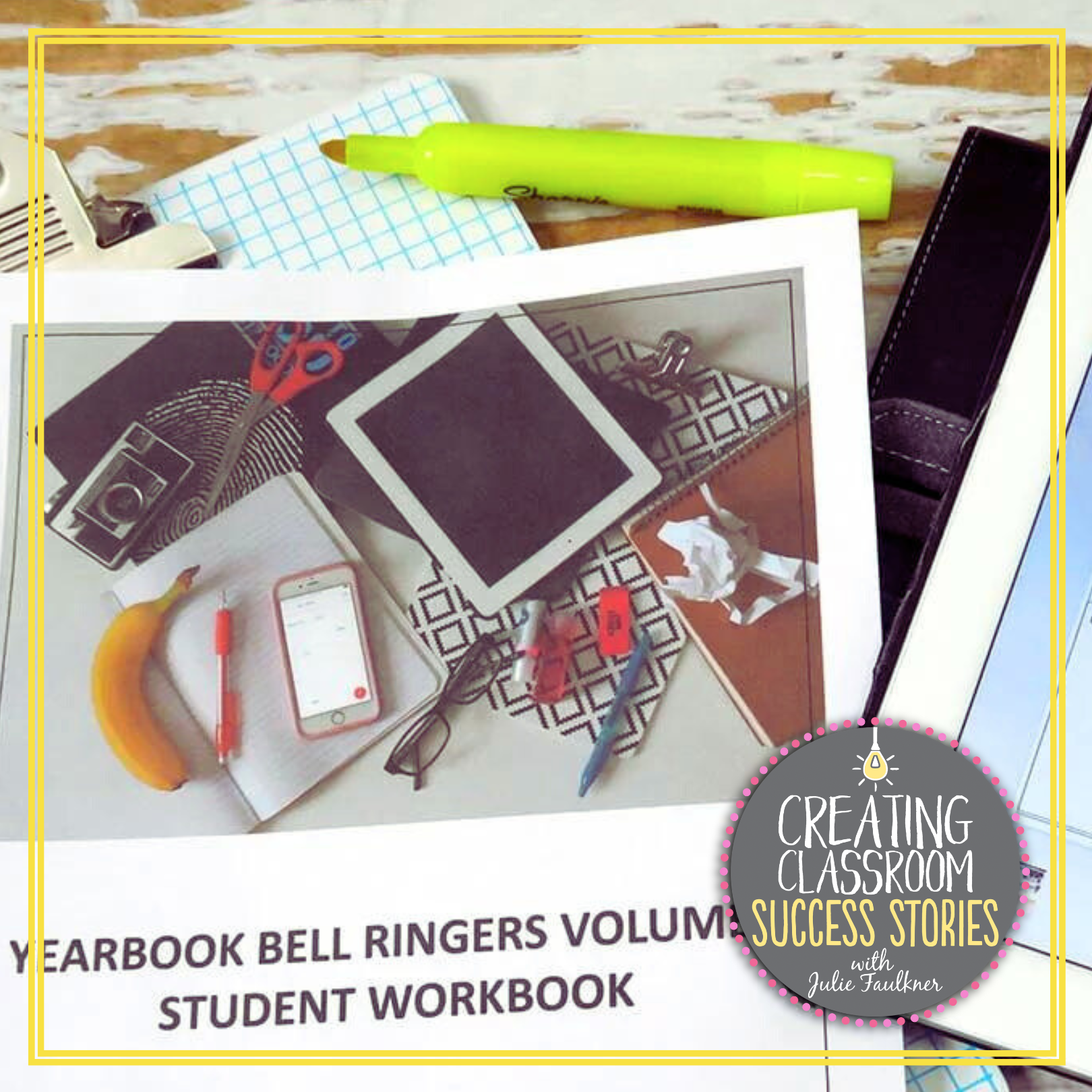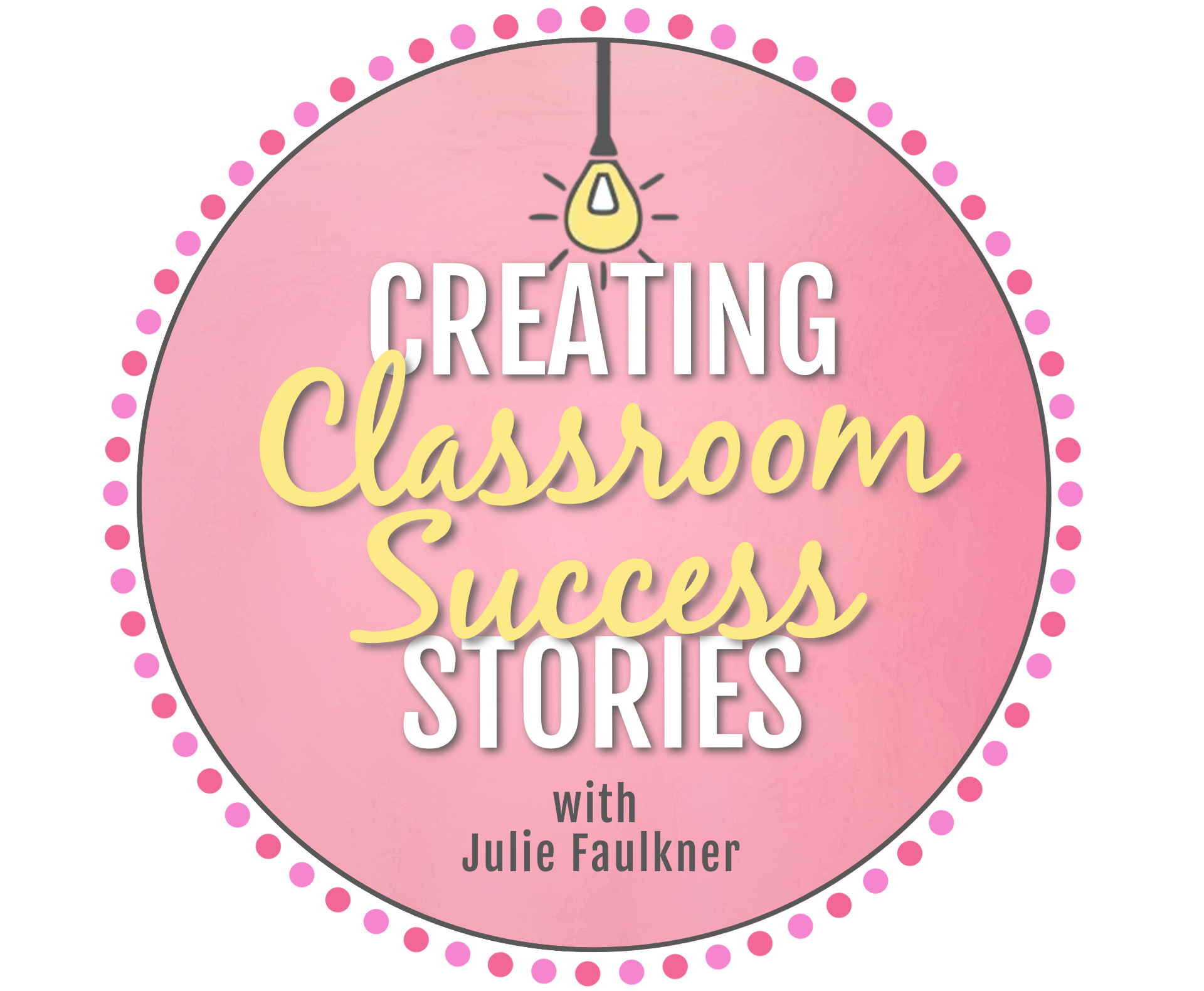Sports-Themed Lesson Ideas for
Middle & High School English Class
Fall means more than cooler weather and Friday night lights, and it also means sports are in full swing at high schools and colleges across the country. Many of our students eat, sleep, and breathe athletics, so why not tap into that energy in the English classroom? Sports-themed lessons can be a powerful way to boost engagement while still targeting reading, writing, and language standards. Here are a few “slam dunk” ways to connect English skills to sports.
1. Media Literacy & Sports Analysis
Sports aren’t just played—they’re broadcast, marketed, and celebrated through media. Students can analyze commercials, social media posts, or highlight reels to explore persuasive techniques, rhetorical appeals, and audience targeting. For example, break down a Super Bowl ad or a Nike campaign and discuss the use of ethos, pathos, and logos. This also works well with debate or discussion activities, letting students form opinions and justify them using evidence from the media.
👉 Pair this with my Super Bowl Commercial Analysis activity or other media literacy resources to make lessons interactive and relevant. I offer these activities FREE for ELA and Yearbook/Journalism! You can also read my blog post about using the Super Bowl in ELA class here.
2. Sports-Themed Figurative Language & Vocabulary
Sports offer a fun way to strengthen both vocabulary and figurative language skills. If you already teach a set of vocabulary words each week, try mixing it up by having students create spirit posters for their favorite school sport using those words. It’s an easy way to practice spelling, usage, and word connections in a creative format.
You can extend the activity by layering in figurative language. Sports commentary and advertisements are filled with similes, metaphors, hyperbole, and personification, so why not use that energy in class? Assign groups different figurative language terms (or let them choose) and ask them to design posters describing their favorite sport or team using their assigned device.
👉 For extra creative practice, grab my FREE sports-themed figurative language coloring page—a quick, no-prep way to review while keeping students engaged.
3. Reading About Sports in ELA: Fiction and Nonfiction
Sports make an engaging lens for reading practice—whether you’re working with poetry, nonfiction, or longer texts. A couple of favorites are my “Boys of Fall” poetry lesson (using Kenny Chesney’s lyrics for figurative language and theme) and my hot topics nonfiction articles on hazing and coaches’ behavior, which spark strong discussions and critical thinking. You can even pair canonical anchor texts with excerpts from modern memoirs, biographies, and autobiographies of famous and influential athletes and coaches. I do this when I teach Olaudah Equiano and pair it with the opening excerpt from Tony Dungy's memoir. See that lesson here.
If you’re looking to dig deeper or have time for a full novel unit, my novel guide for John Grisham’s Bleachers provides everything you need to teach the text, including a creative activity where students analyze color and number symbolism. For classrooms short on time, I’ve included a set of close reading excerpts with targeted ELA skills—perfect for stations, small groups, or bell-to-bell activities.
👉 If you are already in the middle of a novel unit and want to make it sports-themed, grab my new Jersey Symbolism activity that works with any text!
4. Writing About Sports-Themed Topics in ELA
Score big with writing prompts that tap into students’ love of sports. A creative narrative task might ask students to tell the story of a heroic athlete both on and off the field—perfect for practicing character development and plot. See my Narrative Writing Unit for tons of graphic organizers and rubrics. For argument writing, try prompts like Which sport offers the most benefits? or Should athletics be part of the school day? These lead easily into lessons on claims, counterclaims, and rebuttals. See my complete teaching pack for claims, counterclaims, and rebuttals here.
For something a little different, have students step into the role of a sports commentator. My creative sportscaster review activity (part of my Creative Writing Activities Pack) invites students to write and perform their own play-by-play or highlight reel from the "big" moment in any text you are reading. I love to use it after the Beowulf v. Grendel fight scene! It’s a fun way to build descriptive language, tone, and voice—all while letting students show off their personality.
👉 Whether narrative, argumentative, or performance-based, sports-themed writing tasks are a strong way to develop skills while keeping motivation high.
5. Research and Presentations About Sports
If you have a little more time—or access to technology—sports make a strong springboard for research projects. One idea is to have students investigate the number of injuries in high school athletics and present their findings in a short multimedia project. This not only builds research and presentation skills but also opens the door for reviewing MLA formatting and citations. See my complete teaching pack for MLA formatting here.
You can also broaden the scope by letting students explore topics such as the history of a particular sport, the cultural impact of athletics, or controversies like performance-enhancing drugs or gender equity in sports. Presentations can take many forms: slide decks, digital posters, or even short video clips.
👉 Give students a research organizer or presentation rubric to keep them on track and ensure academic standards are met. Sports give students an entry point they care about, and the research process helps them see connections between the game and the real world.
In Conclusion
Sports provide a natural way to engage students across multiple areas of English language arts. From building vocabulary and exploring figurative language to reading poetry, nonfiction, and novels, there are countless ways to tap into students’ interests while reinforcing key skills. Writing tasks—from creative narratives to argumentative essays and sportscaster reviews—let students express themselves, while research and presentations encourage critical thinking and real-world connections. And don’t forget media literacy—analyzing commercials, broadcasts, and social media helps students understand how language and visuals influence audiences.
With just a few simple adjustments, sports-themed lessons can transform your classroom into a space where learning feels as exciting as game day. Bridging the gap between academics and sports isn’t always an easy task, but when you can make connections like with these sports-themed lesson ideas, you open up the opportunity to reach more students. That is definitely a win-win!
Love this content?
Sign up for my email newsletter with more tips, ideas, success stories, and freebies!


